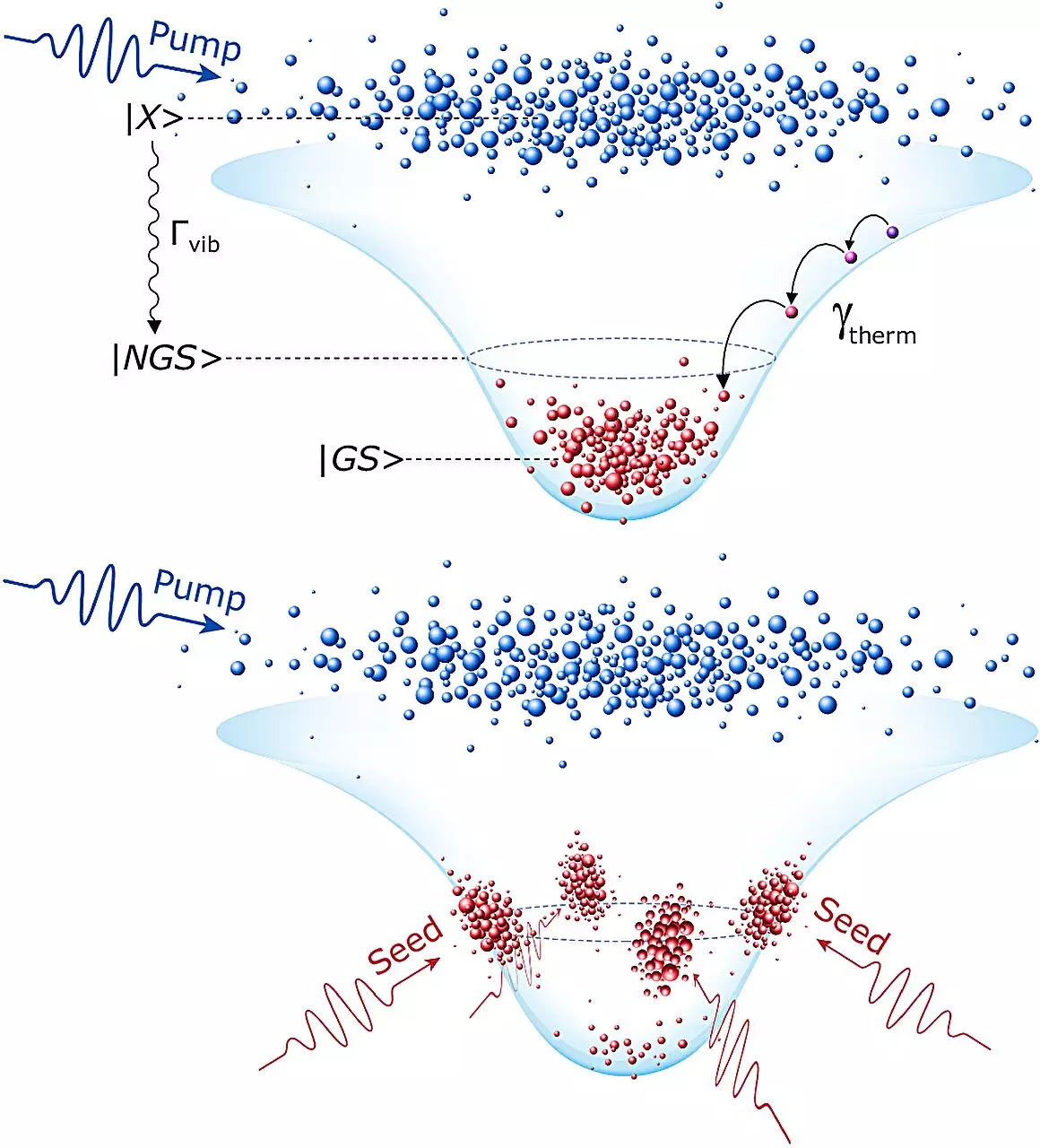The relentless pursuit of faster, more efficient computing has taken a significant turn with groundbreaking research conducted by a collaborative team from Skoltech and Germany’s Bergische Universität Wuppertal. Their innovative approach led to the development of a universal NOR logic gate that operates at room temperature through the use of polariton condensates. This advancement promises to revolutionize the field of computing, moving us closer to the realm of optical computers that can perform calculations at speeds unprecedented in traditional electronic systems.
The team’s findings, recently published in the journal Nature Communications, highlight several key advantages offered by their newly developed optical gate. Unlike conventional electronic gates limited by physical constraints, this optical NOR gate is designed to operate without electric current and can handle multiple inputs—up to an impressive twelve, no less. The implications of this development are wide-ranging, indicating a dramatic shift in how we might conceive and construct computing systems in the future.
Understanding Polariton Condensates and Their Significance
At the heart of this innovation lies the phenomenon of polariton condensation, a state of matter formed when photons and excitons (bound pairs of electrons and holes) interact in a unique, effective way. Dubbed “liquid light,” these condensates exhibit the potential to amplify weak optical signals, providing a level of sensitivity and responsiveness that surpasses existing electronic circuits. This amplification capability is essential in constructing sophisticated logic gates that can play pivotal roles in complex computations.
The research team’s approach challenges traditional notions about signal processing; it exploits the inherent advantages of polaritons to manipulate logic operations at unprecedented speeds. While conventional electronic processors are constrained by thermal limitations that impede their clock frequencies—hovering around several GHz—polariton-based systems have the potential to operate at frequencies surging up to 1 THz. This speed leap translates to hundreds of times more efficient processing than current electronics, potentially altering the landscape of computing as we know it.
A Cascade of Possibilities: The Future of Optical Logic Gates
The practical applications of this novel optical NOR gate could stretch far beyond simple mathematical functions. Logic gates act as the foundational building blocks of processors, executing a range of operations—conjunctions, negations, and disjunctions—crucial for executing instructions in computing. By enhancing the capabilities of these gates to accept numerous inputs, the research team has paved the way for more intricate and capable processing units.
Further, this development creates the opportunity for cascading multiple optical gates to form complex circuits. Cascading refers to the ability to connect several logic gates in a sequence, allowing for sophisticated computational tasks to be achieved through relatively simple elements. In effect, this could lead to the design of entirely new architectures for future optical computers that harness light’s intrinsic speed rather than the constraints of electrical signals.
The Challenges Overcome: Pioneering the Path to Fully Optical Computers
Despite the clear advantages evident from their research, achieving a fully functional optical computer has long been seen as a formidable challenge. Sannikov and his colleagues remark on the fundamental hurdle posed by photon interactions; unlike electrons, photons do not interact in ways that facilitate the construction of conventional logic gates. Thus, the challenge of creating an operational optical converter capable of manipulating signals has been a long-awaited breakthrough.
This research not only showcases an innovative solution but also reveals the dedication and ingenuity required to bridge gaps in our scientific understanding. By successfully condensing polaritons to control optical signals, the researchers have provided a promising avenue toward realizing fully optical logical circuits, which hold the key to solving many emerging technological problems.
Implications for the Future of Technology
The potential shift from electronic to optical computing cannot be overstated. As society increasingly relies on technology for an almost endless array of applications—from data processing to complex machine learning algorithms—the demand for faster and more efficient computing solutions has never been more pressing. This research points to a futurist vision where optical computers dominate the landscape, not only serving common computing tasks but also enabling advanced applications that were previously thought unattainable.
The implications stretch far into the realm of artificial intelligence, big data analytics, and high-performance computing, where speed and efficiency are paramount. As researchers continue to explore the vast possibilities offered by polariton condensates and related technologies, one can only speculate how these early breakthroughs will evolve into the cornerstone of the next generation of computing architecture, marking an illuminating chapter in the saga of technological advancement.

